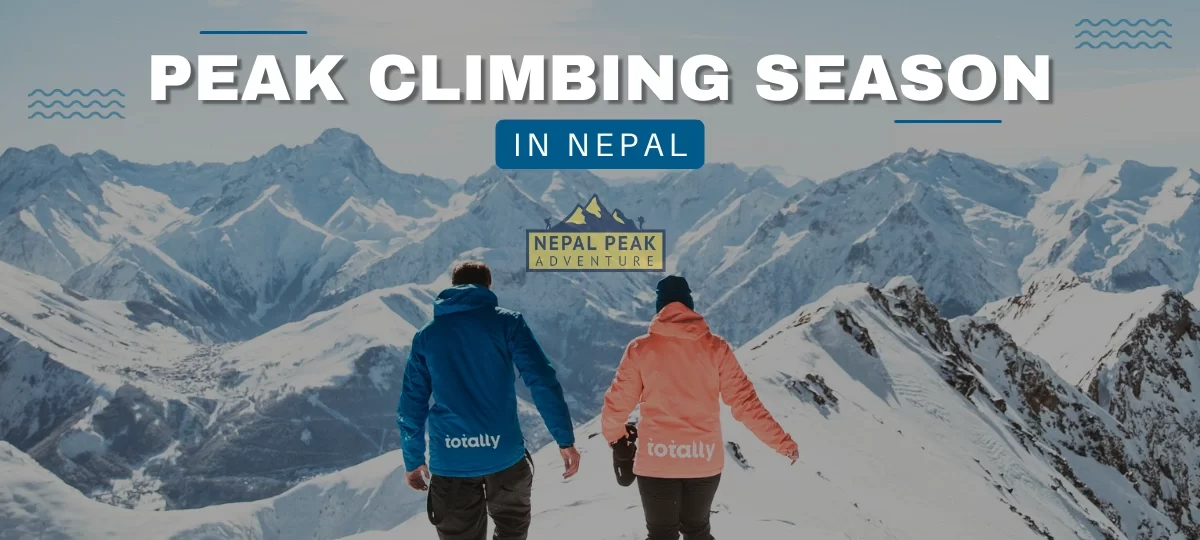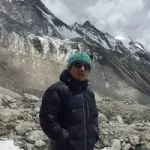Peak Climbing Season in Nepal: Best Time to Summit
Nepal, home to some of the world’s most iconic peaks, offers incredible opportunities for peak climbing. Whether you’re aiming for popular trekking peaks like Island Peak, Mera Peak, and Lobuche East, or more technical climbs like Ama Dablam and Kyajo Ri, timing your ascent is crucial for a successful summit.
Nepal experiences four distinct seasons—spring, summer (monsoon), autumn, and winter—each offering different climbing conditions. In this blog, we will explore the best peak climbing seasons in Nepal, their advantages and challenges, and the factors to consider before planning your climb.
Best Peak Climbing Seasons in Nepal
1. Spring Season (March to May) – Best Time for Peak Climbing
Why is spring the best season for climbing?
Spring is widely regarded as the best season for peak climbing in Nepal due to its stable weather conditions, clear skies, and comfortable temperatures. The snow conditions are optimal, and the climbing routes are relatively safe compared to other seasons.
Advantages of Climbing in Spring:
✔ Stable Weather: Mild temperatures and predictable weather patterns make it ideal for climbing.
✔ Clear Views: Crisp, clear skies provide stunning views of the Himalayas.
✔ Moderate Snow Levels: Enough snow remains for good footholds, making climbing easier.
✔ Blooming Landscapes: The lower trekking routes are covered with beautiful rhododendron forests.
✔ Higher Summit Success Rates: Due to favorable weather and trail conditions.
Challenges of Climbing in Spring:
❌ Peak Season Crowds: Popular peaks like Island Peak and Mera Peak can get busy.
❌ Slightly Higher Costs: Due to high demand, permit fees and trekking costs may increase.
2. Autumn Season (September to November) – Second Best Season for Climbing
Why is autumn also great for peak climbing?
Autumn is another ideal season for peak climbing in Nepal, offering clear skies, moderate temperatures, and excellent visibility after the monsoon season.
Advantages of Climbing in Autumn:
✔ Stable Weather: Post-monsoon clear skies ensure excellent visibility.
✔ Comfortable Temperatures: Cooler but not too cold, ideal for climbing.
✔ Lower Risks of Avalanches: Snow conditions are firm, reducing the risk of avalanches.
✔ Less Rain and Snow: Trails are dry, making trekking to base camps easier.
✔ Fewer Insects & Leeches: Monsoon pests are no longer an issue.
Challenges of Climbing in Autumn:
❌ High Demand: Many trekkers and climbers visit Nepal during this season.
❌ Colder Nights: Temperatures can drop significantly at higher altitudes.
3. Monsoon Season (June to August) – Not Recommended
Why is monsoon not ideal for peak climbing?
The monsoon season in Nepal brings heavy rainfall, especially in lower regions, making it the least favorable time for climbing.
Challenges of Climbing in Monsoon:
❌ Heavy Rainfall: Trails can be slippery and dangerous.
❌ Poor Visibility: Clouds and fog obscure mountain views.
❌ Increased Risk of Landslides: Especially on the trekking routes leading to base camps.
❌ Unpredictable Weather: Frequent storms can disrupt climbing plans.
Are There Any Exceptions?
If you are still keen on climbing during monsoon, rain-shadow areas like Upper Mustang or Dolpo could be options. However, most trekking peaks are not recommended during this time.
4. Winter Season (December to February) – Challenging but Possible
Can you climb peaks in winter?
Yes, but winter peak climbing in Nepal is extremely challenging due to harsh weather conditions, heavy snowfall, and freezing temperatures.
Challenges of Climbing in Winter:
❌ Extreme Cold: Temperatures can drop below -20°C at high altitudes.
❌ Frequent Snowfall: Heavy snowfall can make climbing routes impassable.
❌ Higher Avalanche Risks: Unstable snow conditions increase risks.
❌ Shorter Days: Less daylight means limited climbing hours.
Best Peaks for Winter Climbing:
- Island Peak (for experienced climbers)
- Mera Peak (requires high-altitude winter climbing skills)
- Pisang Peak (for those who can handle extreme conditions)

Comparison Table: Best Climbing Seasons in Nepal
| Season | Weather Conditions | Visibility | Climbing Difficulty | Crowds | Overall Recommendation |
|---|---|---|---|---|---|
| Spring (Mar-May) | Best – Stable, mild | Excellent | Moderate | High | ⭐⭐⭐⭐⭐ (Best Season) |
| Autumn (Sep-Nov) | Best – Clear, dry | Excellent | Moderate | High | ⭐⭐⭐⭐⭐ (Second Best) |
| Monsoon (Jun-Aug) | Poor – Rainy, cloudy | Low | Difficult | Low | ⭐ (Not Recommended) |
| Winter (Dec-Feb) | Harsh – Freezing, snowy | Moderate | Very Difficult | Low | ⭐⭐ (For Experts Only) |
Factors to Consider Before Choosing Your Climbing Season
1. Your Experience Level
- Beginner Climbers: Spring or autumn is best.
- Experienced Climbers: Winter or autumn can offer more challenge.
2. Weather Tolerance
- If you prefer warmer conditions, choose spring or autumn.
- If you can handle extreme cold, winter is an option.
3. Permit Availability & Costs
- Peak seasons (spring & autumn) have higher permit fees.
- Off-seasons (monsoon & winter) may offer discounts but with more risks.
4. Crowds & Trekking Experience
- If you dislike crowds, consider early spring (March) or late autumn (November).
- If you want a social trekking experience, mid-season is great.
Conclusion: When Should You Climb?
For most climbers, spring (March-May) and autumn (September-November) are the best seasons for peak climbing in Nepal. The stable weather, clear views, and moderate temperatures make them the most favorable times to attempt a summit.
However, experienced mountaineers seeking solitude and an extra challenge can attempt winter climbs, while monsoon climbing is generally discouraged due to rain and unpredictable conditions.
Before planning your climb, consult with a reliable trekking and climbing company like Nepal Peak Adventure to ensure you choose the best season based on your skills and goals.
Are you planning your next peak climbing adventure? Let us help you choose the perfect time and peak for your journey!



